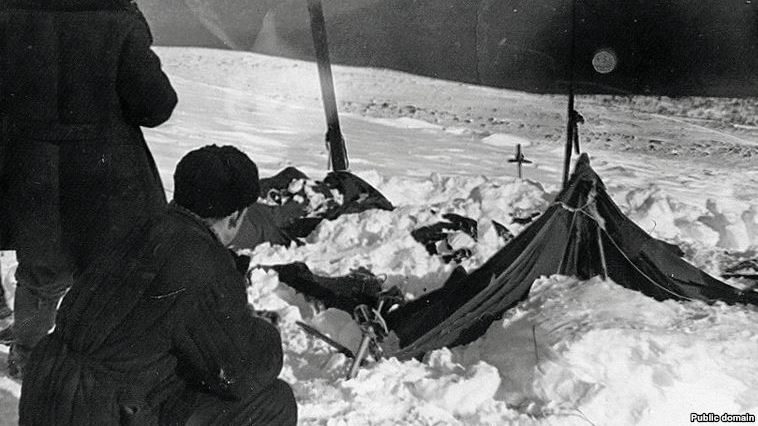Prosecutor-General's Office spokesman Aleksandr Kurennoi said on February 1 that investigators were looking into the notorious Dyatlov Pass deaths and hope to establish the truth of how the hikers died.
He said that although some 75 theories have been put forward, prosecutors believe the most likely cause of the deaths was either an avalanche or a heavy storm.
The hikers died on February 1-2, 1959, at a place that was later named Dyatlov Pass after the group's leader, Igor Dyatlov. Information about the case was classified by the Soviet authorities until the 1970s.
Soviet investigators concluded that during the night, an "unknown, compelling force" prompted the two women and seven men to cut their way out of their tents and flee the campsite without shoes or warm clothing, despite the freezing cold.
They determined that six of the hikers died of hypothermia, while three had signs of physical trauma including skull fractures and chest injuries. One of the women had her tongue and eyes removed.
Conspiracy theories and speculation about the case have circulated widely in Russia and around the world for decades.
After the investigation concluded that an "unknown compelling force" had caused the deaths, numerous theories, including conspiracy ones, have circulated in Russia for decades. Some theories include animal attacks, infrasound-induced panic, and military testing.
Comment: None of the above theories explain the removal of the woman's tongue and eyes.
A 10th member of the excursion, Yury Yudin, turned back after becoming ill on January 28 and died in 2013 at the age of 75.
Kurennoi said a group of investigators and forensics experts will visit Dyatlov Pass in March to determine the exact location of the group's campsite, the gradient of the slope, the depth of the snow, and other data.




Comment: According to the article Researcher claims Dyatlov pass mystery victims could have been on KGB mission: and going further in New film retells story of Soviet hikers meeting mysterious death it says: See also:
- Dyatlov Pass mystery - Body found at Dyatlov Pass where 9 hikers mysteriously died in 1959
- Russia's Dyatlov Pass incident, the strangest unsolved mystery of the last century
UPDATE 4th February 2018 at 12:18RT provides a bit more detail of the investigation: